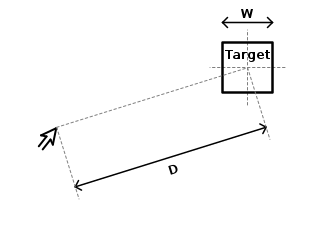
A central processing unit (CPU), also called a central processor, main processor or just processor, is the electronic circuitry that executes instructions comprising a computer program. The CPU performs basic arithmetic, logic, controlling, and input/output (I/O) operations specified by the instructions in the program. This contrasts with external components such as main memory and I/O circuitry, and specialized processors such as graphics processing units (GPUs).

A clock or a timepiece is a device used to measure and indicate time. The clock is one of the oldest human inventions, meeting the need to measure intervals of time shorter than the natural units: the day, the lunar month, year and galactic year. Devices operating on several physical processes have been used over the millennia.

A pointing device is a human interface device that allows a user to input spatial data to a computer. CAD systems and graphical user interfaces (GUI) allow the user to control and provide data to the computer using physical gestures by moving a hand-held mouse or similar device across the surface of the physical desktop and activating switches on the mouse. Movements of the pointing device are echoed on the screen by movements of the pointer and other visual changes. Common gestures are point and click and drag and drop.

Fitts's law is a predictive model of human movement primarily used in human–computer interaction and ergonomics. This scientific law predicts that the time required to rapidly move to a target area is a function of the ratio between the distance to the target and the width of the target. Fitts's law is used to model the act of pointing, either by physically touching an object with a hand or finger, or virtually, by pointing to an object on a computer monitor using a pointing device. It was developed intially by Paul Fitts

Attention is the behavioral and cognitive process of selectively concentrating on a discrete aspect of information, whether considered subjective or objective, while ignoring other perceivable information. William James (1890) wrote that "Attention is the taking possession by the mind, in clear and vivid form, of one out of what seem several simultaneously possible objects or trains of thought. Focalization, concentration, of consciousness are of its essence." Attention has also been described as the allocation of limited cognitive processing resources. Attention is manifested by an attentional bottleneck, in term of the amount of data the brain can process each second; for example, in human vision, only less than 1% of the visual input data can enter the bottleneck, leading to inattentional blindness.

Experimental psychology refers to work done by those who apply experimental methods to psychological study and the processes that underlie it. Experimental psychologists employ human participants and animal subjects to study a great many topics, including sensation & perception, memory, cognition, learning, motivation, emotion; developmental processes, social psychology, and the neural substrates of all of these.

Psychophysics quantitatively investigates the relationship between physical stimuli and the sensations and perceptions they produce. Psychophysics has been described as "the scientific study of the relation between stimulus and sensation" or, more completely, as "the analysis of perceptual processes by studying the effect on a subject's experience or behaviour of systematically varying the properties of a stimulus along one or more physical dimensions".

The scaly-breasted munia or spotted munia, known in the pet trade as nutmeg mannikin or spice finch, is a sparrow-sized estrildid finch native to tropical Asia. A species of the genus Lonchura, it was formally described and named by Carl Linnaeus in 1758. Its name is based on the distinct scale-like feather markings on the breast and belly. The adult is brown above and has a dark conical bill. The species has 11 subspecies across its range, which differ slightly in size and color.

The Wason selection task is a logic puzzle devised by Peter Cathcart Wason in 1966. It is one of the most famous tasks in the study of deductive reasoning. An example of the puzzle is:
You are shown a set of four cards placed on a table, each of which has a number on one side and a colored patch on the other side. The visible faces of the cards show 3, 8, red and brown. Which card(s) must you turn over in order to test the truth of the proposition that if a card shows an even number on one face, then its opposite face is red?

Phonological awareness is an individual's awareness of the phonological structure, or sound structure, of words. Phonological awareness is an important and reliable predictor of later reading ability and has, therefore, been the focus of much research.

Change blindness is a perceptual phenomenon that occurs when a change in a visual stimulus is introduced and the observer does not notice it. For example, observers often fail to notice major differences introduced into an image while it flickers off and on again. People's poor ability to detect changes has been argued to reflect fundamental limitations of human attention. Change blindness has become a highly researched topic and some have argued that it may have important practical implications in areas such as eyewitness testimony and distractions while driving.

Mental chronometry is the scientific study of processing speed or reaction time on cognitive tasks to infer the content, duration, and temporal sequencing of mental operations. Reaction time is measured by the elapsed time between stimulus onset and an individual’s response on elementary cognitive tasks (ETCs), which are relatively simple perceptual-motor tasks typically administered in a laboratory setting. Mental chronometry is one of the core methodological paradigms of human experimental, cognitive, and differential psychology, but is also commonly analyzed in psychophysiology, cognitive neuroscience, and behavioral neuroscience to help elucidate the biological mechanisms underlying perception, attention, and decision-making in humans and other species.
Memory has the ability to encode, store and recall information. Memories give an organism the capability to learn and adapt from previous experiences as well as build relationships. Encoding allows a perceived item of use or interest to be converted into a construct that can be stored within the brain and recalled later from long-term memory. Working memory stores information for immediate use or manipulation which is aided through hooking onto previously archived items already present in the long-term memory of an individual.
The scalar timing or scalar expectancy theory (SET) is a model of the processes that govern behavior controlled by time. The model posits an internal clock, and particular memory and decision processes. SET is one of the most important models of animal timing behavior.
Norman H. "Mack" Mackworth (1917–2005) was a British psychologist and cognitive scientist known for his pioneering work in the study of boredom, attention, and vigilance; the Mackworth Clock test has been used since the 1940s in the study of vigilance.
In modern psychology, vigilance, also termed sustained concentration, is defined as the ability to maintain concentrated attention over prolonged periods of time. During this time, the person attempts to detect the appearance of a particular target stimulus. The individual watches for a signal stimulus that may occur at an unknown time.

The ideomotor phenomenon is a psychological phenomenon wherein a subject makes motions unconsciously. Also called ideomotor response and abbreviated to IMR, it is a concept in hypnosis and psychological research. It is derived from the terms "ideo" and "motor". The phrase is most commonly used in reference to the process whereby a thought or mental image brings about a seemingly "reflexive" or automatic muscular reaction, often of minuscule degree, and potentially outside of the awareness of the subject. As in responses to pain, the body sometimes reacts reflexively with an ideomotor effect to ideas alone without the person consciously deciding to take action. The effects of automatic writing, dowsing, facilitated communication, applied kinesiology, and ouija boards have been attributed to the phenomenon.

PEBL is an open source software program that allows researchers to design and run psychological experiments. It runs on PCs using Windows, OS X, and Linux, using the cross-platform Simple DirectMedia Library (libSDL). It was first released in 2003.
The Posner cueing task, also known as the Posner paradigm, is a neuropsychological test often used to assess attention. Formulated by Michael Posner, it assesses a person's ability to perform an attentional shift. It has been used and modified to assess disorders, focal brain injury, and the effects of both on spatial attention.
In psychology, the prevalence effect is the phenomenon that one is more likely to miss a target with a low prevalence than a target with a high prevalence or frequency. A real-world application of this phenomenon occurs in airport security screening; since a very small proportion of those going through security checkpoints carry weapons, security staff may fail to detect those attempting to carry weapons onto a plane.













